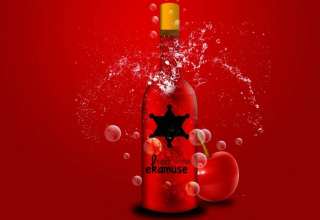With 245,000 acres of land devastated by the wildfires in California, Courtney Humiston reports on the effect of the fires on local wineries and vineyards
The smoke is finally clearing above Northern California after two weeks of near-constant fires devastated 245,000 acres and nearly 8,000 structures across five counties. As of October 20, 42 people had died and thousands are still displaced.
It sounds bleak and in many areas it is. Entire neighborhoods have been reduced to ash. Businesses destroyed. The photographs from the seemingly endless ordeal are dramatic and the aerial shots are visual testament to what we were hearing on the ground during the blaze: apocalypse; war zone.
But now that the ash has settled and the thick haze has lifted, we begin to dig through the rubble of rumours and misinformation and find that the wineries, vineyards and even the 2017 vintage wines are (mostly) doing very well.
“There is this whole feeling that wine country is toxic now,” says Tom Farella, owner, farmer and winemaker of Farella Vineyards in the Coombsville region of Napa Valley. “Fortunately that is just not the story at all.”
As of October 18, only 47 out of 330 wineries who had reported to the Napa Valley Vintners had sustained any damage.
Some wineries are understandably unwilling to speak up so soon in the wake of such devastation. “I have something like survivor’s guilt,” says the manager of a winery in Stags Leap district. All 65ha had been picked and the winery was unharmed, but out of respect for “those who were not as fortunate,” he did not want to go on record.

Farella is not afraid to express his optimism. He fought day and night — sometimes alone — to save his family’s vineyard and winery from the flames. He was also among the minority of growers in Napa Valley who still had grapes on the vine (the NVV estimated that 90 percent of the grapes by volume were picked before the fires began).
Up until the fire, the 2017 vintage was deemed challenging but ultimately remarkable. “It was a difficult growing season, says Farella, “but everything we brought in, we loved.”
I spoke with Farella just as he was finishing the last of the harvest. He picked as soon as Coombsville was out of harm’s way and he could get his workers together. “We are very optimistic,” he said of Farella of the prospect of smoke taint. “We don’t sense any smoke issues now, but I’m aware that they could exist.” He stressed however it was unlikely that smoke-tainted fruit would find its way into bottles: “What winemaker would bottle an inferior wine and hope nobody notices?”
You would never do that with a high-end wine, he says. “It’s going to be a supply issue, not a qualitative issue.”
Graeme MacDonald, a third-generation farmer at the renowned To Kalon vineyard in Oakville (who makes and eponymous Oakville cabernet sauvignon), agrees.
“My personal thought is that people will look down on this vintage but the truth is… a lot of people already picked. Consumers may not trust it… but not for a good reason.”
For those who had not picked, says MacDonald, “it’s a total unknown. I am hesitant to say that anyone’s wines are going to be ruined. Same as everything, it is very site specific. There is a high level of awareness. [Tainted grapes] are not going to be made into wine and then ignored.”
In Sonoma, where the densely populated city of Santa Rosa received the most structural damage, wineries and residents are still reeling, but beginning to see the light.
Ulysses Van der Kamp, who lives on and farms 10ha on Sonoma Mountain, had just got his electricity back for the first time in 10 days when I spoke to him on his land line (cell coverage is still spotty).
He and his family spent nearly the entire time on the mountain fighting spot fires with rakes, shovels and buckets of water. “We had fires on all sides of us. Every day you would think it is over and then it’s not. The fire was everywhere.”
Not, however, in the vineyard.

Van der Kamp vineyard, surrounded by forest, is one of the oldest pinot noir vineyards in Sonoma County. Such is its renown that when Aubert de Villaine of Burgundy’s Domaine de la Romanee-Conti came to California to scout a pinot noir site, he came to Van der Kamp.
The family’s amateur firefighting skills played a role in its survival, but it turns out that so too did the vineyard itself. Like others, Van der Kamp saw that flames would leap right over the vineyard, favouring dry brush and grass over the moisture-filled vines. And this was the story everywhere: ranchland, forests and neighborhoods destroyed; vineyards untouched.
Priorities in wine country remain feeding and housing and keeping people safe. “It seems frivolous to think about my wine,” one long-time Russian River Valley producer told me.
Sam Coturri, whose family owns Enterprise Vineyard, a major vineyard management company in Sonoma County, said on Facebook:
“To say we’re returning to business as usual is far from the truth because there is nothing normal about our life right now…. First priorities are water and power. Vineyard assessments and salvaging the harvest can wait, but that comes next. We live off the land here, even if your job is selling wine in a tasting room. Saving our lives includes protecting our livelihoods.”
All pics Graeme MacDonald






